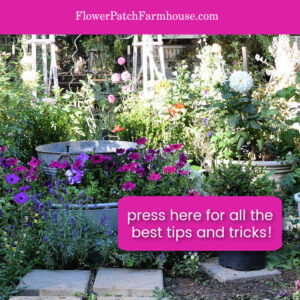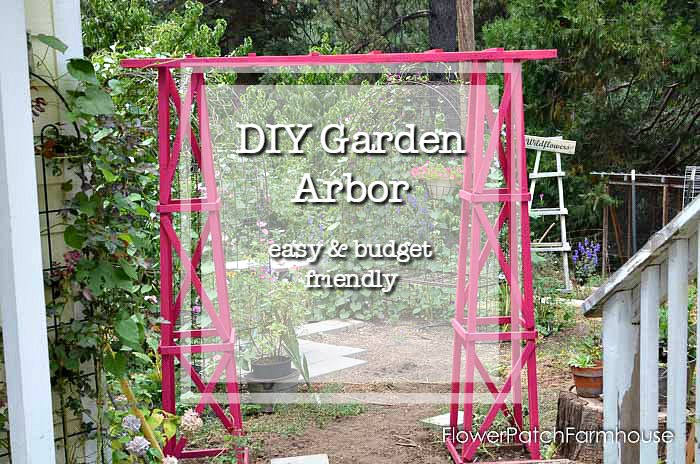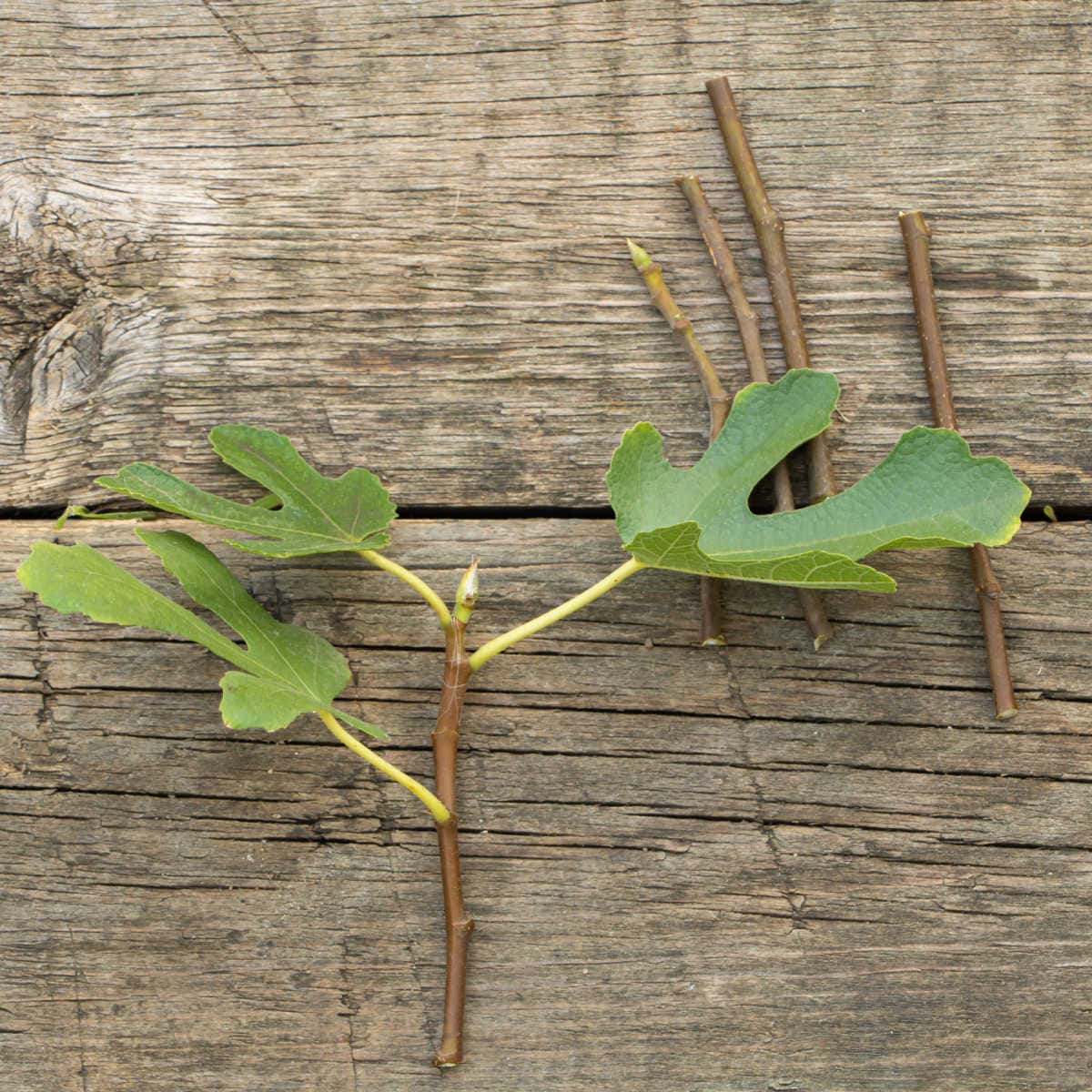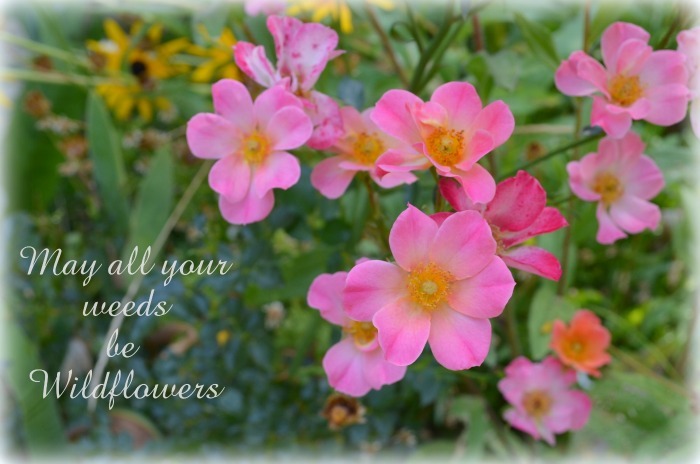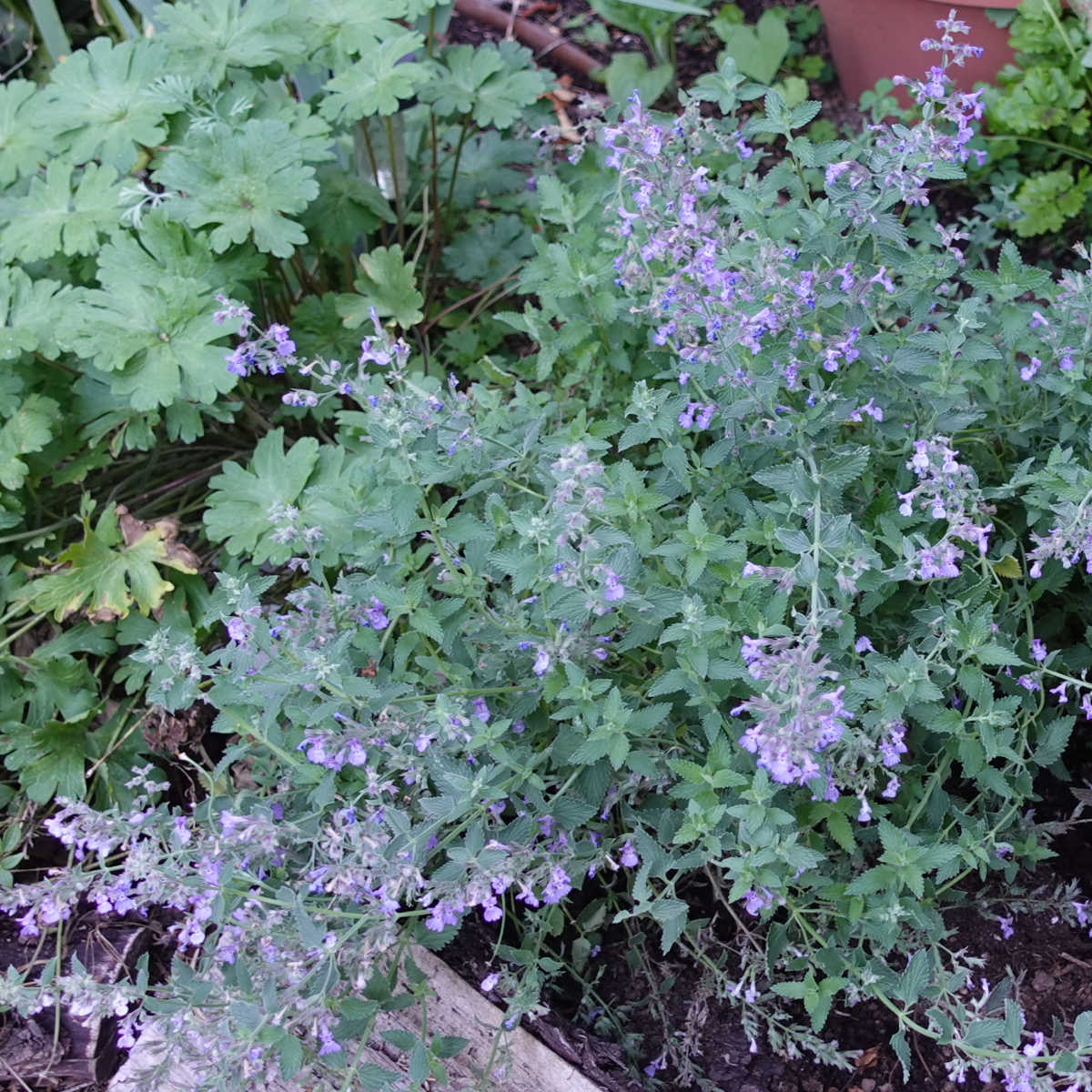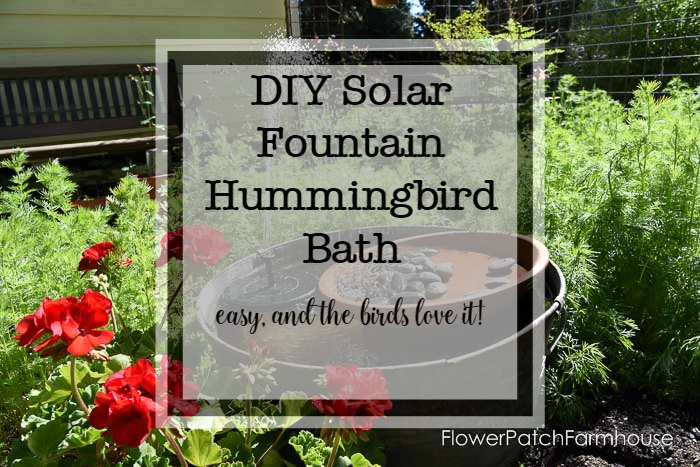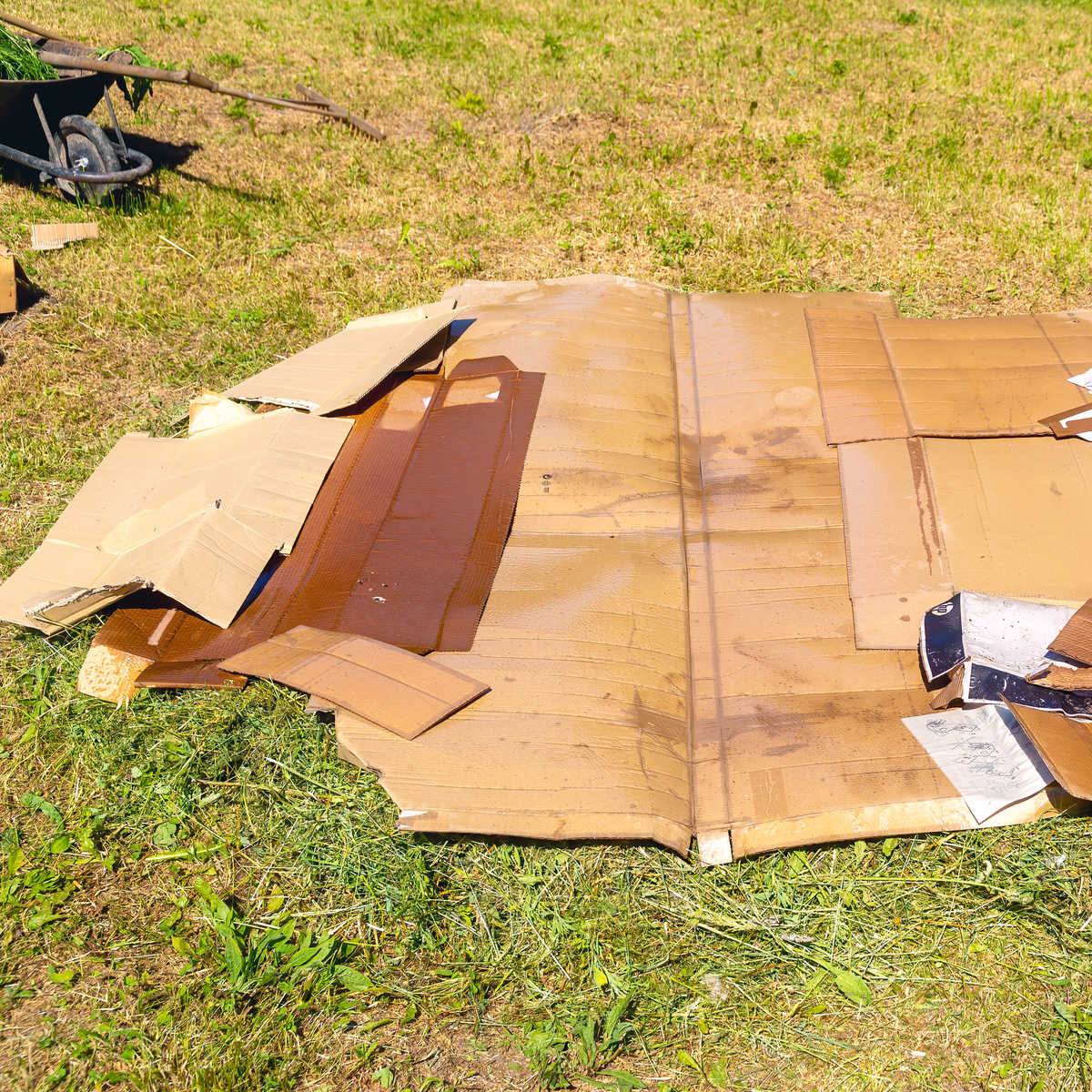Need Help with Weeds? How to Weed a Garden
Weeds Gone Crazy? Well, I am here to help with How to Weed a Garden! Now I am not against growing a Weed Garden but that is another topic entirely.
How to weed a garden but without spending all weekend at it! Weeds are a real pain and can seem to take over your garden within days. However, there’s no need to get frustrated or give up on gardening!
Did you know that weeds are the number 1 listed complaint of many gardeners? There are several options for dealing with weeds, but what really works?
We may never have a completely weed-free garden, but we can certainly strive to weed less often. When weeding your garden, there are some simple steps you should follow.
Here are the basics
- identify the weeds
- prevent weeds with mulch or groundcovers
- cover crops as weed control
- avoid tilling or digging
- remove them by hand consistently
- water the garden effectively
- proper plant spacing
- Inspect new plants
- healthy soil
- Relax
What is a weed?
A weed is any unwanted plant, according to most definitions. Dandelions, purslane, lamb’s quarters, bindweed, and pigweed are some common garden weeds.
Weeds compete for water, light, and nutrients with plants; however, they can also host pests or diseases.
It’s all in the eye of the beholder, as certain weeds, like dandelions, purslane, and lamb’s quarters are edible and well-liked with foragers.
Weeds may also attract and help beneficial insects and pollinators thrive.
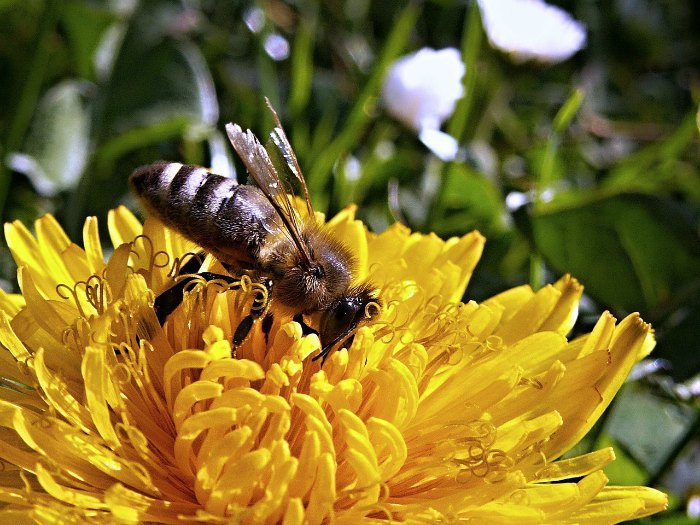
As a result, I welcome dandelions to blossom in my garden then I harvest them to feed to my chickens.
Another reason I let them have their way is their large taproot is claimed to ‘mine’ nutrients deep in the soil and bring them up for use by other plants. The taproot also can help to break up compacted soil.
Prevent Weed Seeds from Germinating
Never leave your soil bare. To inhibit weed seed germination, make sure that your soil stays covered. This can be done in a few ways.
Mulch is one of the most important tools in a weed-free garden. A good mulch blocks light from reaching the soil, reducing weed seed germination.
Mulch well with a weed-free organic material, such as compost, shredded leaves, straw (be careful, some straw does have weeds) or shredded wood.
Most of the materials that are great for mulch are things that people are trying to get rid of anyway!
Mulch should be at least two to three inches thick if you want to control weeds. (later in this post I share how I use cardboard at times)
Groundcovers
Groundcover plants also can smother out weeds in your beds. I have a few favorites that I shared in this post.
You can plant these at the base of shrubs, along the path as edging, or whatever your growing heart desires.
Weed Control with Cover Crops
Cover crops are a fantastic way to reduce weeds and build soil at the same time. In a new garden site, you can plant an easy-growing, dense cover crop like buckwheat which is also called a ‘smother crop’ for its capability to choke out weeds.
I like to use buckwheat in Fall as the winter cold will kill it back negating the need for me to cut it.
As it lays on the ground during winter the worms and soil microorganisms feed on it, working it into nutritious soil for next season’s crops, whether flower or vegetable!
It’s also is a great soil builder when dug into the soil. If using a cover crop that isn’t winter-killed or you are using it during the growing season, be sure to cut it down before they set seeds.
I like to use Crimsom Clover as it is not only very easy to grow but it has lovely crimson blooms. I usually cut it down or pull it up and lay it on the soil next to my desired plants as a mulch before it sets seed.
How do cover crops suppress unwanted weeds? When you plant a cover crop, the weeds have little chance to take hold and are shaded out.
Legumes are great nitrogen fixers, so they make excellent cover crops. Did you know that alfalfa is a legume?
I have also used bales of alfalfa to mulch with when I want to add some nutrients to an area.
When you’re ready to plant your flowers or veggies, simply cut them back work them into the soil a week to two before you plant, and get started!
You can cut them back, lay them on top of the soil, then cover them with a black tarp, this heats the soil up plus aids in the breakdown of the cover crop so you don’t need to do any real digging.
I will explain why I try not to dig.
For a Weed Free Garden, Do Not Till!
Tilling and digging over the soil in your garden will actually encourage weeds to grow.
Turning over the soil brings weed seeds to the surface, where they will get light and heat that can help them germinate.
This has happened in my garden many times before I started mulching or cover cropping my garden beds each Fall.
Embracing the no-till method has been one of the best things to lessen the need to weed in my garden.
lazy gardener tips
Easy Garden Start Up
I confess to being a lazy gardener so I show you how you can get a gorgeous garden started without breaking your back or bank account!
Be consistent and weed often
Pull weeds as soon as you see them. This makes it easier as they have not gotten a tight grip yet.
During the main growing season, I spend a lot of time in my gardens. Each morning I take my cup of coffee and wander the garden paths and take in all that is happening.
I not only enjoy what is blooming or sprouting, but I am also making a mental note of where I need to tackle some weeding.
To prevent weeds from taking over your garden, you need to maintain weed control all year long.
Many gardeners weed frequently in the early spring but then fail to continue for various reasons whether it is a busy schedule, not liking the heat or other factors.
One hint that does help is to make sure the area to be weeded is damp. It is so much easier to pull up weeds from the soil when it is well watered.
Weeding seems impossible to keep up with if you let it get out of hand, little weeds will develop into enormous ones.
Failure to weed throughout the year will allow weeds to take over, reseed and perpetuate the problem!
I have been known to take a shortcut when a garden path was overgrown with weeds that I did not want to go to seed but I did not have time to weed by hand. Sometimes you just have to pull out the big guns and roll with it!
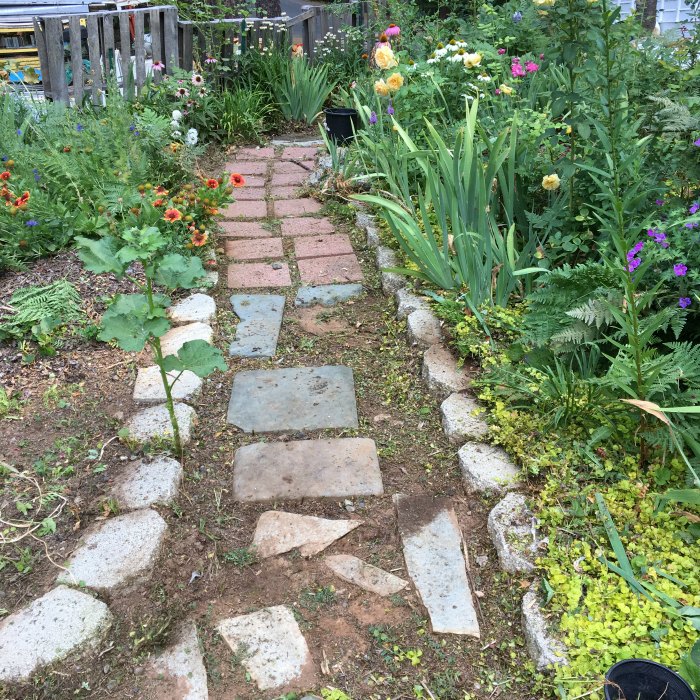
Of course, this won’t work where you have precious plants but it works in areas you just want to clear fast, like a path.
For deep-rooted weeds, instead of chopping them at surface level, you will want to pull each weed out by hand.
Chopping these deep-rooted weeds leads to regrowth. If the weed cannot be easily pulled, use a trowel or garden knife to dig up the roots and remove the plant.
Please don’t resort to herbicide sprays, even those touted as organic. Read all about garden Myths here.
Water the Garden effectively
Finally, be sure to water your garden regularly. This will help keep your desired plants healthy and strong and make it less likely for weeds to take over.
Water-starved weeds will have a tough time competing with your plants for resources.
Deny weeds water, by placing drip or soaker hoses beneath mulch next to your desired plant, they will get watered water while leaving nearby weeds dehydrated.
Depriving weeds of water reduces weed-seed germination by 50 to 70 percent.
I am loving my drip system, I got a kit first then once I figured out how to do it I just bought the components I needed.
Plant Spacing in Weedless Gardening
Plant spacing can be a challenge for many beginner gardeners. We want to cram as much into the space we have and when the plants are just seedlings we may not realize how large they can get.
If they are too close they struggle. Too far apart and the weeds can encroach.
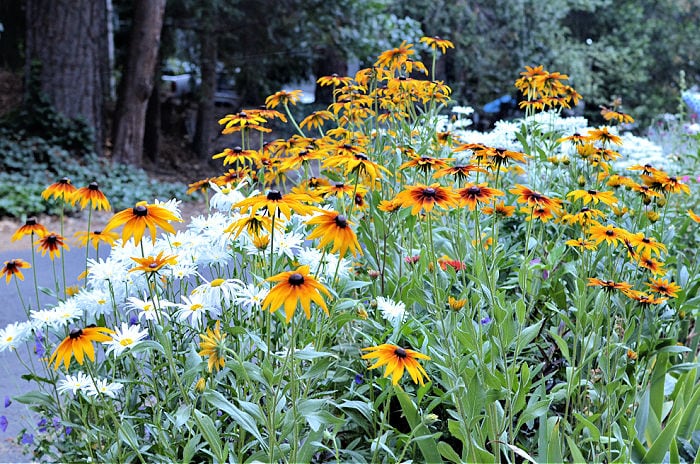
I am known for my closely planted well pack garden beds. Few weeds sprout as they don’t get any light between all the flowers.
And if I have some of my plants too close once they are maturing I just dig out some to transplant to other parts of the garden or I pot it up to give it away. Win, win!
Inspect new plants
Have you ever purchased or been given a new plant only to discover there were weed roots or seeds in the dirt?
I just purchase a shrub from a reputable garden center and when I got it home I examined it closely. Sure enough, a few weeds were sprouting at its base, right in the pot.
Just as important, if not more so, examine any plants given to you by friends and family as well.
Though weed seeds can be harbored in the soil and not be seen you can easily see ones that have already sprouted.
You can pot on the plant and wait to see if any weeds sprout or you can plant it out in your garden beds and keep a close eye.
Mulching well will help keep most weed seeds transported with the plant from germinating.
Build healthy soil
I have an entire post on how to attain healthy, organic soil. Healthy soil leads to healthier plants.
Healthy plants will outcompete weeds plus as stated before they can grow large enough to shade out any weeds.
When creating your own compost try not to get any weed seeds or perennial weeds in it. Most home composting does not get hot enough to kill weed seeds.
easy for everyone
Build Organic Healthy Soil!
It isn’t hard to build your soil and make it the best it can be for growing healthy plants! With great soil, there is no need to buy expensive fertilizers. Your plants with thank you!
The frequent addition of organic matter to your soil may aid in keeping weeds at bay.
Soil ecologists are unsure how it works, but fewer weed seeds sprout in soil that has been rejuvenated with fresh applications of high-quality compost or organic matter.
Landscape fabric for a Weed-Free Garden?
Well, all I can tell you is they have not worked at all for me and in fact, have been a big fat problem.
Eventually, landscape fabrics get soil on top of them, just enough for weeds to germinate in and then the roots entangle into the weed cloth, making it impossible to pull them up.
If you wish to use something to smother weeds in any area I have used cardboard, a couple of layers worth, laid right on top of the weeds, then cover with gravel, for a path or soil for planting.
The cardboard should last long enough to rob the weeds of light and kill them.
Now, this does not work for some tough perennial weeds like Bermuda Grass or the dreaded Bindweed, which run deep into the soil. It does slow it down in the area covered though.
Weed Free Garden?
There is no such thing. But there is something called a Weed Garden!
Yes, and they are quite beneficial. We will talk all about that in another post. You might even be convinced to try one.
Be Real
My best advice is, never grow a garden larger than you can easily take care of. Becoming overwhelmed is the simplest way to put an end to the enjoyment a garden can bring.
I am as guilty as anyone of getting over my head but I am not someone that needs a completely tidy garden. Some weeds creep in here and there and I get to them as soon as I can.
Do you have a small garden space? I have some ideas for you here!
bigger is not always better
Small Garden Ideas!
If you’re looking for some small garden ideas, you’ve come to the right place! Here we will discuss how to create a beautiful and functional small space using flowers and plants.
